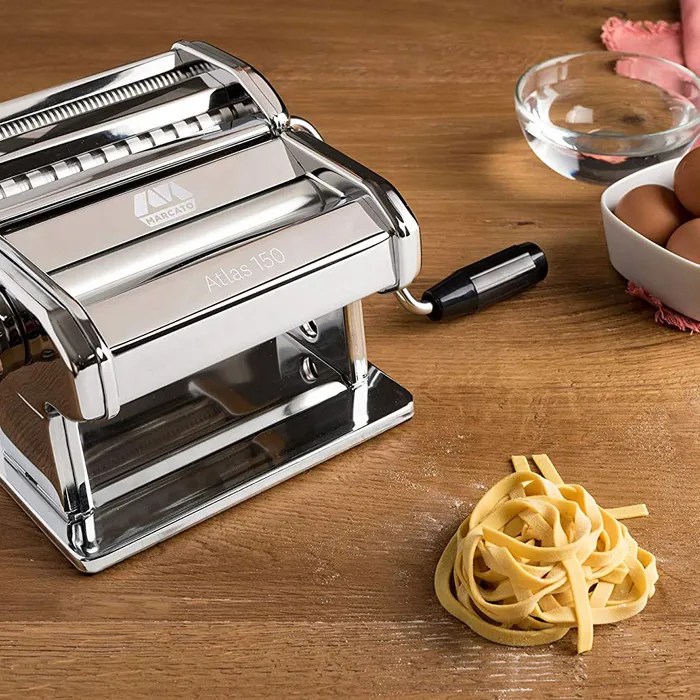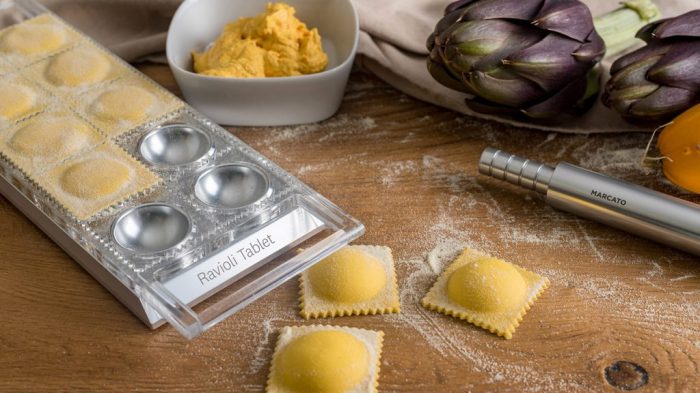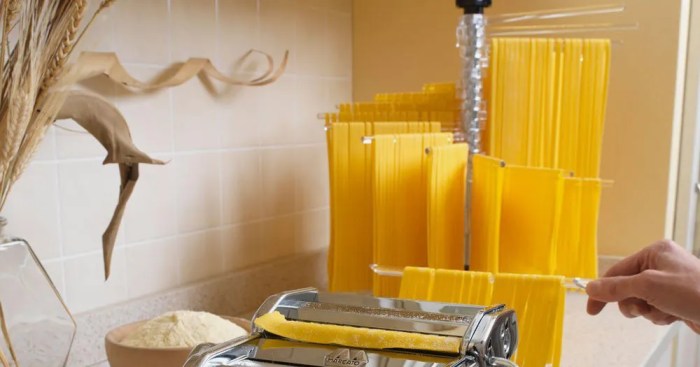Essential tools for making homemade pasta set the foundation for a successful pasta-making journey, ensuring the quality and authenticity of your creations. From pasta machines to pasta cutters, each tool plays a crucial role in shaping the perfect pasta dish. Let’s delve into the world of pasta-making equipment and uncover the secrets to crafting delicious homemade pasta.
Essential Equipment

When making homemade pasta, having the right tools is essential to ensure the process goes smoothly and the end result is delicious. Each piece of equipment plays a crucial role in different stages of pasta-making, from mixing the dough to cutting the pasta into the desired shape.
Pasta Machine
A pasta machine is a fundamental tool for making homemade pasta as it helps roll out the dough to the desired thickness. This ensures that the pasta cooks evenly and has the right texture. With adjustable settings, pasta machines allow you to create different types of pasta, from thin spaghetti to thicker fettuccine.
Rolling Pin
A rolling pin is another essential tool for making pasta, especially if you don’t have a pasta machine. It helps flatten the dough evenly and achieve the desired thickness before cutting it into shapes. While a pasta machine provides consistency, a rolling pin gives you more control over the thickness of the pasta.
Knife or Pasta Cutter
Once the pasta dough is rolled out, a knife or pasta cutter is needed to cut the dough into the desired shapes, such as fettuccine, tagliatelle, or ravioli. These tools help create uniform pieces of pasta, ensuring even cooking and a visually appealing dish.
Mixing Bowl and Fork
Mixing bowls and forks are essential for combining the flour and eggs to make the pasta dough. The fork helps mix the ingredients evenly without overworking the dough, while the bowl provides ample space for kneading. Having a sturdy mixing bowl and fork ensures that the dough is well combined and has the right texture for shaping.
Pasta Drying Rack
After cutting the pasta into shapes, a pasta drying rack is useful for drying the pasta before cooking. It allows air to circulate around the pasta, preventing it from sticking together. Drying the pasta properly helps maintain its shape and texture when cooked, resulting in a perfect plate of homemade pasta.
Types of Pasta Making Machines

Manual pasta rollers and electric pasta makers are two common types of pasta making machines. Each has its own set of pros and cons, making it important to consider individual needs before choosing the right pasta machine.
Manual Pasta Rollers
Manual pasta rollers are operated by hand, requiring the user to feed the dough through the machine by turning a handle. These machines are typically more affordable and easier to clean compared to electric pasta makers. However, they may require more effort and time to use, as the user needs to manually crank the handle to roll out the pasta dough.
Electric Pasta Makers
Electric pasta makers, on the other hand, are powered by electricity, making the pasta-making process quicker and more efficient. These machines often come with different attachments for various pasta shapes, providing versatility in pasta making. However, electric pasta makers tend to be more expensive and may require more storage space due to their larger size.
Recommendations for Choosing the Right Pasta Machine
When choosing between a manual pasta roller and an electric pasta maker, consider factors such as budget, ease of use, and frequency of pasta making. If you are on a tight budget and don’t mind putting in a bit more effort, a manual pasta roller may be the right choice. On the other hand, if you value speed and convenience, investing in an electric pasta maker may be more suitable for your needs.
Importance of a Pasta Cutter

When it comes to making homemade pasta, a pasta cutter plays a crucial role in shaping and cutting the pasta dough into various shapes and sizes. It allows you to create different types of pasta such as spaghetti, fettuccine, tagliatelle, and more with precision and consistency.
When it comes to traditional Japanese cuisine, one cannot overlook the iconic dish of ramen noodles. If you’re interested in trying your hand at making this beloved dish at home, check out this Traditional Japanese ramen noodle recipe for an authentic and flavorful experience.
Types of Pasta Cutters
- Manual Pasta Cutter: These are handheld tools with sharp blades that can be adjusted to cut the pasta dough into desired shapes. They are easy to use and perfect for small batches of pasta.
- Electric Pasta Cutter: Electric pasta cutters automate the cutting process, making it quicker and more efficient. They are suitable for those who make pasta frequently or in larger quantities.
- Attachment Pasta Cutter: Some pasta making machines come with interchangeable attachments that allow you to cut the pasta dough into different shapes. These attachments can be easily switched out to create a variety of pasta shapes.
Tips for Using a Pasta Cutter Effectively
- Prepare the pasta dough properly: Make sure the pasta dough is rolled out to the right thickness before using the pasta cutter.
- Flour the pasta dough: Dust the pasta dough with flour before using the pasta cutter to prevent sticking.
- Practice makes perfect: Experiment with different settings and techniques to find the perfect cut for your desired type of pasta.
- Clean the pasta cutter after each use: To maintain the efficiency and sharpness of the blades, remember to clean the pasta cutter thoroughly after each use.
Tips for Making Pasta Dough: Essential Tools For Making Homemade Pasta
When it comes to making homemade pasta, the dough is a crucial element that can make or break your dish. Here are some essential tips to help you create the perfect pasta dough every time.
Step-by-Step Guide on How to Make Pasta Dough from Scratch
Creating pasta dough from scratch is a simple process that requires just a few basic ingredients. Follow these steps to make pasta dough at home:
- Start by placing 2 cups of all-purpose flour on a clean work surface and create a well in the center.
- Crack 3 large eggs into the well and add a pinch of salt.
- Using a fork, gradually incorporate the flour into the eggs until a dough begins to form.
- Knead the dough for about 10 minutes until it is smooth and elastic.
- Wrap the dough in plastic wrap and let it rest for 30 minutes before rolling it out.
Importance of the Right Consistency and Texture of Pasta Dough
The consistency and texture of your pasta dough are key to achieving the perfect pasta dish. The dough should be smooth, elastic, and not too sticky. If the dough is too dry, it will be difficult to roll out, while if it is too wet, it will be challenging to shape. The right consistency will ensure that your pasta cooks evenly and has the ideal texture.
Troubleshooting Tips for Common Issues When Making Pasta Dough
Sometimes, despite your best efforts, issues may arise when making pasta dough. Here are some common problems and how to troubleshoot them:
- If your dough is too dry and crumbly, add a little water, a teaspoon at a time, until the dough comes together.
- If your dough is too sticky, add a sprinkle of flour and knead it in until the dough reaches the right consistency.
- If your dough is tough and difficult to roll out, let it rest for an additional 10-15 minutes to allow the gluten to relax.
- If your dough tears easily when rolling it out, it may be too dry, so add a bit of water and knead it in gently.
Additional Tools for Pasta Making
When it comes to making homemade pasta, there are various optional tools that can enhance your experience in the kitchen. These tools can help streamline the pasta-making process and add new dimensions to your recipes.
Pasta Drying Racks
Pasta drying racks are essential for ensuring that your freshly made pasta dries evenly and maintains its shape. By hanging the pasta strands on the rack, you prevent them from sticking together and allow for proper air circulation. This results in a better texture and flavor of the final dish.
Ravioli Makers, Essential tools for making homemade pasta
A ravioli maker is a handy tool for creating perfect, uniform ravioli every time. This tool typically consists of a mold with indentations where you can place the filling and a top layer of pasta. With a ravioli maker, you can speed up the process of making this classic pasta dish and impress your guests with professional-looking results.
Creative Pasta Shapes
Experimenting with additional tools opens up a world of possibilities for creating unique pasta shapes and designs. For example, you can use cookie cutters to make fun shapes like stars or hearts, or specialized presses to create intricate patterns on your pasta. These creative touches can elevate your dishes and make mealtime more enjoyable.
Final Review

As we conclude our exploration of essential tools for making homemade pasta, remember that the right equipment can elevate your pasta-making skills to new heights. By investing in quality tools and mastering the techniques discussed, you can create delectable pasta dishes that will impress family and friends alike. Happy pasta-making!
Looking for a refreshing and healthy salad option? Try making a delicious avocado shrimp salad using this Fresh avocado shrimp salad recipe. Packed with nutrients and flavors, this dish is perfect for a light and satisfying meal.
For all the sweet tooths out there, nothing beats a classic chocolate chip cookie. Elevate your baking skills with the help of this Best chocolate chip cookie recipe that guarantees soft and chewy cookies every time.